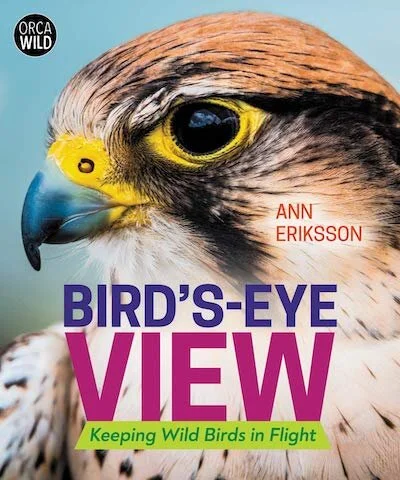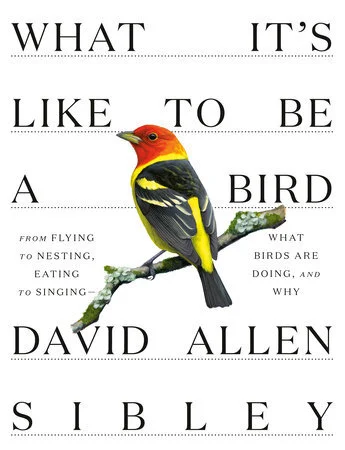NATURE'S WORLDWIDE WEB
Margaret Atwood rounds up six bright editions that explore the reasons birds matter. (Plus bonus track: Fungus!)
You’ve heard about it. You’ve seen other people doing it. Most likely you’ve experienced it yourself. In the years of COVID, we’re told, people walked more, appreciated nature more, smelled the roses, got pollen allergies and took up birdwatching for the first time. Home and garden materials are galloping out of the stores as people get around to things they somehow never had time to get around to before. Bags of dirt – bags of good dirt! – are hard to find. “Dirtbag” is no longer an insult – yell it and people say “Where?” And just try locating any well-composted animal excrement. Do not say “sack of shit” – say “desirable nutrient-packed soil enhancer!”
If this describes you, you’re not alone. Psst, got any dirtbags? Do you deliver? I too have spoken these words.
Will we go back to our wicked ways once this is over? Will we sink into an airplane seat with sighs of relief and gulp down a few gin and tonics while murmuring, “Brown Thrasher, what was that? It was all a horrible dream”?
Maybe. Charitable giving to nature organizations is still very low compared with, say, hearts and kidneys. Humans prioritize humans, and most do not yet realize that without the worldwide web of animal-plant-fungal interactions, we ourselves would not exist. Should you wish to increase the funding percentage, you might try Nature Canada, Ontario Nature, FLAP, The Nature Conservancy, The Pelee Island Bird Observatory or the Toronto Wildlife Centre.
But maybe we won’t backslide. Once you’ve seen, for instance, a Baltimore Oriole, they’re hard to forget.
Here, to help you nurture, top-dress and root-feed your newfound passion for the Living World, are a few booky nuggets.
Bird’s-Eye View: Keeping Wild Birds in Flight (Orca Wild) by Ann Eriksson
Keyed to the young as well as the no longer exactly young, here’s an attractive account of why wild birds matter and what we can do to keep them flying – especially the 200 endangered species.
What it’s Like to be a Bird (Knopf) by David Allen Sibley
David Sibley is wildly famous as a bird-guide author and illustrator. His newest book takes us past mere outward appearances into everything bird: structures, habits, eggs and nesting, flying, eating, singing. (However, he doesn’t go into why having a bird poop on you is good luck, or whether having your car pooped on counts. Maybe in the next edition.)
Flight from Grace: A Cultural History of Humans and Birds (McGill-Queens) by Richard Pope
Richard Pope is a dogged and dedicated birder, but this book isn’t about that. It’s an account of the very, very long interrelationship between humans and birds – emotional, religious, magical – and how we have recently been messing that up. And, hopefully, how we might begin to restore the balance.
Birdsong in a Time of Silence (Particular Books, Penguin Random House) by Steven Lovatt
This is a charming, brief, COVID-specific meditation on birdsong and how we have been sustained by it during our enforced ordeal. From the bird’s-eye point of view, it’s been a good time: Some species have reversed their downward population trend. And, says Lovatt, if there’s hope for birds, there’s also hope for us.
A Most Remarkable Creature: The Hidden Life and Epic Journey of the World’s Smartest Birds of Prey (Knopf) by Jonathan Meiburg
Jonathan Meiburg leads the band Shearwater, but lo! He has now written this quirky and fascinating book about … Caracaras! If you like really strange travel writing mixed in with unusual science and encounters with alien beings, you won’t be disappointed. A great book to read if you are feeling cooped up. Go to the Falklands, walk in the footsteps of perennially seasick Darwin, and make friends with a Striated Caracara. You’ll be better for it.
The Bedside Book of Birds: An Avian Miscellany (Doubleday) by Graeme Gibson
Graeme Gibson spent 10 years putting this book together. It’s all things bird: paintings, carvings, myths, folklore, poems, fiction, religions, scientists, travellers – all cultures, all ages. This book, popular with birders and non-birders, has now been reissued, with a new foreword by me. Not surprising, as Graeme Gibson was my life partner.
Entangled Life: How Fungi Make Our Worlds, Change Our Minds, & Shape Our Futures (Random House) by Merlin Sheldrake
This book is not about birds, except that without its subject – fungi, which are neither plant nor animal but closer to the latter – there would be no birds. Or terrestrial life. Or you. Yes, you are part fungus. Next time someone accuses you of that, thank them for the compliment. The science is gripping, the possibilities are barely explored, the commercial applications… well, let’s say they’re amazing. Food, of course, but don’t eat the wrong ones. Mind-alterers, ditto. But fungus leather? Fungus building materials? I myself will be very cross if I don’t get buried in a fungus coffin. Just saying.








